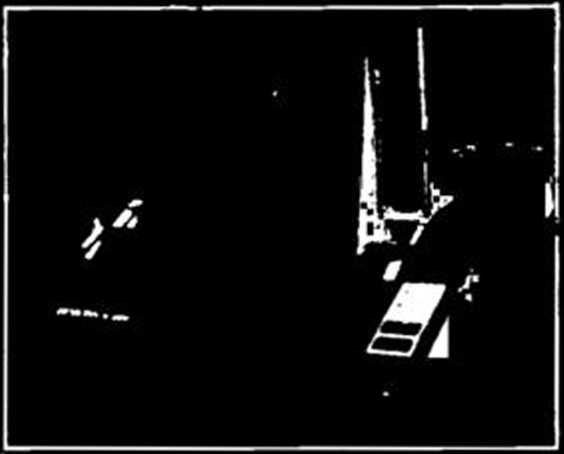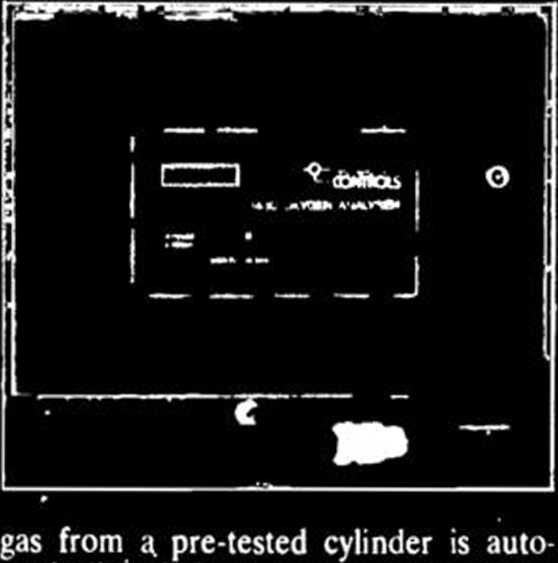5196106121

f

Marconi Instruments is marketing a benchtop automatic board test system, called Checkmate, designed to meet the needs of production, design, research and educational establishments.
Its functions are determined by plug-in cards. It can work as a digital or analog tester or both.
Test options rangę from in-circuit to logie analysis. ,
Checkmate requires no specialist pro-gramming skills.
Morę information is available from Marconi Instruments, 2 Giffnock Ave-nue, North Ryde, 2113.
Speech Workstation from Intel
19” rack mount cabinet, and has three removable media options: a magnetic bubble cassette, a 3.5” microfloppy disk, or a 5.25” minifloppy disk.
Data is entered directly into the system by speaking commands into the mi-crophone. To accommodate the natural changes in speech, the system features “adaptive training”.
If the system has not recognised a word or phrase with certainty, the system prompts the operator to verify the word or phrase. The operator verifies the word with a “yes” or “no” com-mand. The speech Workstation uses the confirmation data to modify i^ refer-ence template for how specific words appear to it when the operator voices them.
For morę information contact Intel Australia, 200 Pacific Highway, Crows Nest 2065.
• • ELECTRONICS Australia. September 1987 117
New generation printer
Epson has introduced its LX-8()0 printer to Australia, which Epson says, prints at 180q>s in draft elite and 150cps in draft pica. A featurc of this economi-cal printer is an enlarged 3Kb print buffer.
The printer’s SelecType front control panel allows auto single sheet loading.
In addition to roman, sans serif is now included in resident fonts.
According to Epson the new ribbon cartridge prints 3 million charactcrs, three times morę than the company’s previous models.
The LX-800 offers download charac-ter capability of 6 characters, and elite, italic and super- and sub-scripts are sup-ported in both .draft and near letter quality modes.
For morę information contact Epson Australia, 3/17 Rodborough Road, Frenchs Forest 2086.
Software analyses
intermodulation
problems
To help solve the problems that can occur due to intermodulation distortion when signals from various transmitters of different frequencies mix with each other, Radio Frequency Systems of Kil-syth, Victoria, (formerly Antenna Engi-neering Australia) has dcveloped a Computer program that can analyse the cf-fect of up to 100 different transmitters on up to 100 different receivers.
The hard copy printout defines signal frequencies that may cause problems to the receiver. With this information the necessary prccautions in form of band-stop or bandpass filtering can be taken.
RFS will supply this analysing service at a nominał Iow fee to customers or others interested. The company can then also supply the necessary filtering networks.
For morę information contact Radio Frequency Systems, PO Box 191, Croy-don 3136.
Combustion controller is self calibrating
A new Australian developed oxygen analyser-controller for combustion monitoring and control employs a novel design which allows the sensor probe and analyscr to be self calibrating, according to its supplier Novatech.
This eliminates the need to regularly check and recalibrate, a problem com-mon to • most existing oxygen probe/analyser systems.
The analyser electronics self calibrates all analog input sections every two sec-onds. If the analyser is unable to self calibrate, there will be an alarm. The analog output sections of the analyser are also checked every 2 seconds. If any calibration drift occurs, an alarm will alert the operator, to petform a calibration. This is a press button function which takes 2 seconds.
The probe also has an automatic Online calibration facility, where a known
Benchtop board tester

Intel Corporation has introduced a second generation factory speech Workstation, the iSWS 210. The unit pro-vidcs hands-free, eyes-free, voicc-data entry in a variety of real-time industrial and laboratory applications.
The new speech Workstation can recognise 1,000 words (an inerease of 800 words over its previous system) and is built to withstand temperatures up to 55°C in industry and dirty cnviron-ments. It can also discriminate between background factory noises and the human voice.
Besides voice data entry, the Workstation synthesizes speech from text and can be used to verbally communicate with the operator. With the iSWS 210 the ability to “speak” to the operator through an earphone obviates the need to look at a screen.
The new Workstation is housed in a matically admitted to the probe sensor under control of the analyser microproc-essor. If an error beyond a nominated level occurs an alarm will again be initi- * ated. Alarms are identified by the operator in plain English on an LCD display.
For further information contact Nova-tech Controls (Aust), 429 Graham Street, Port Melbourne 3207.
Wyszukiwarka
Podobne podstrony:
72 Aleksandra Leśniewska An example of post-interaction notes taken down by the instructor is presen
CBS 710 Automatic Loudness Controller The Model 710 is designed to reduce those portions of the audi
Instrumentalizm działań marketingowych w kampaniach wyborczych podtrzymanie oraz rozwój stosunków
Instrumentalizm działań marketingowych w kampaniach wyborczych wpływa na wybór strategii wyborczej,
Instrumentalizm działań marketingowych w kampaniach wyborczych [4] Goban-Klas T.,
Instrumentalizm działań marketingowych w kampaniach wyborczych teczność w dotarciu do odbiorców mają
Instrumentalizm działań marketingowych w kampaniach wyborczych data, atakowanie przeciwników, a takż
Instrumentalizm działań marketingowych w kampaniach wyborczych ne jest rozwojem mediów sieciowych,
Instrumentalizm działań marketingowych w kampaniach wyborczych chowując rzetelność informacji.
58032 ScanImage002 International marketing is defined as the performance of business activ
Renata Matysrk-Pejas, Szymon Szlachta Product placement jako instrument komunikacji marketingowej -
Instrumentarium komunikacji marketingowej - grupy narzędzi + przykłady działań z
Instrumenty komunikacji marketingowej_Marketing Wydarzeń MARKETING WYDARZEŃ (opracowanie Grzegorz
Instructions to Authors This instruction is based upon Uniform Requirements for Manuscripts Submitte
więcej podobnych podstron